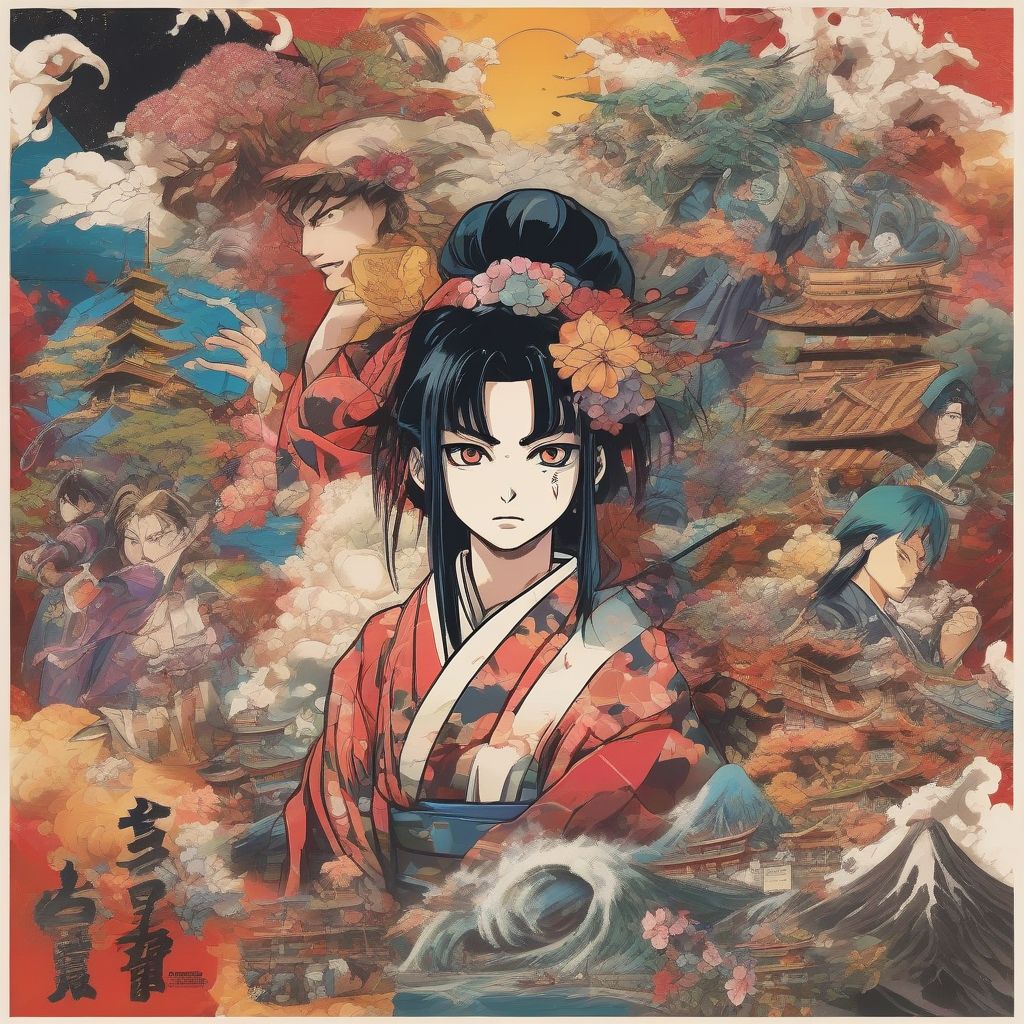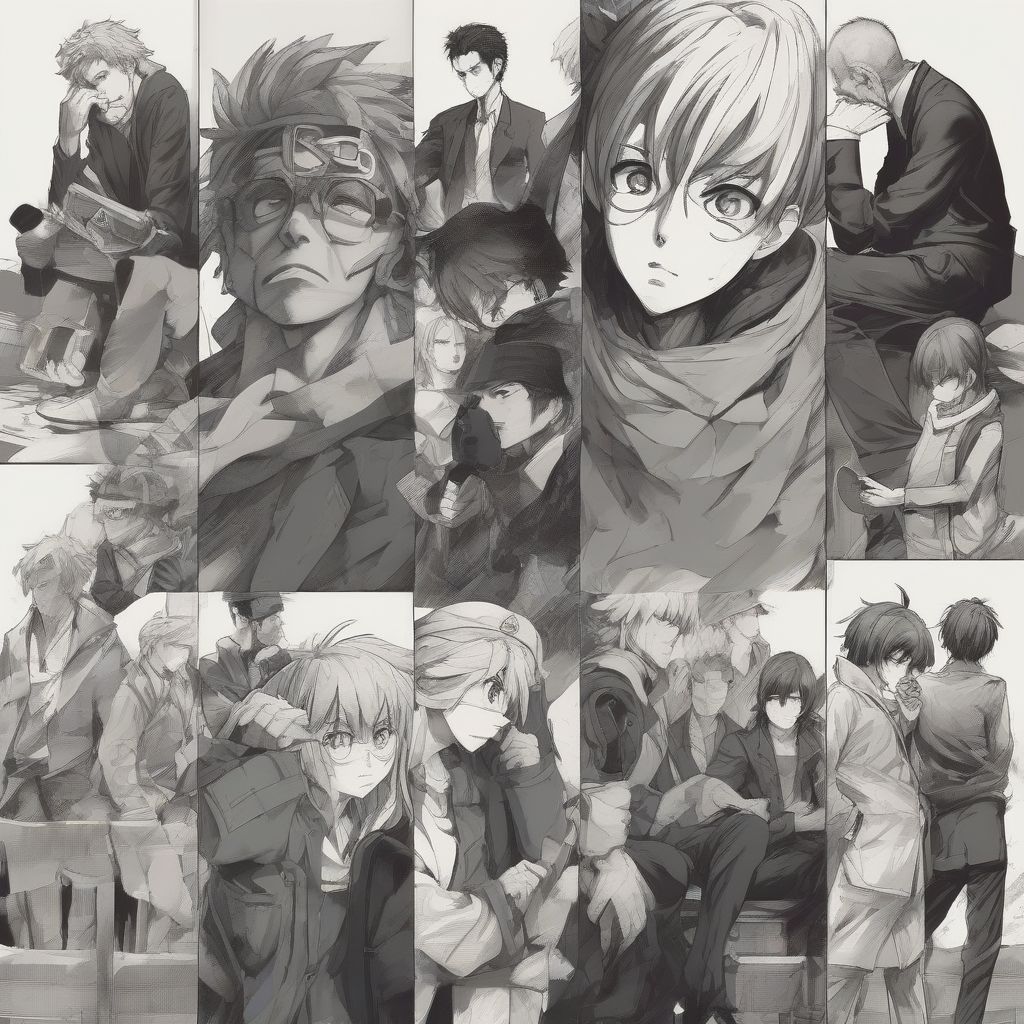Have you ever gotten lost in the vibrant world of anime, with its epic battles, complex characters, and compelling storylines? Or perhaps you’ve been captivated by the beautiful artwork and captivating narratives of manga? These forms of Japanese entertainment have become global phenomena, captivating audiences worldwide. But have you ever wondered about the cultural exchange happening behind the scenes, shaping these industries into what they are today?
The Rise of Anime and Manga: A Story of Cultural Exchange
The history of anime and manga is deeply intertwined with cultural exchange. Early anime drew inspiration from Western animation techniques, particularly from Disney. This influence is evident in the work of Osamu Tezuka, often hailed as the “God of Manga,” whose iconic style borrowed heavily from Disney’s aesthetic.
However, anime and manga didn’t simply imitate Western styles. They blended these influences with uniquely Japanese storytelling traditions, cultural values, and artistic sensibilities. This fusion created a distinct art form that resonated with audiences both domestically and internationally.
 Cultural Exchange in Anime
Cultural Exchange in Anime
From Japan to the World: The Globalization of Anime and Manga
The global journey of anime and manga began in the late 20th century, gaining traction in various countries through different avenues:
- Television broadcasting: Shows like “Astro Boy” and “Dragon Ball Z” became international sensations, introducing anime to a broader audience.
- Home video releases: The rise of VHS and later DVD made anime more accessible, allowing fans to watch and rewatch their favorite series.
- Conventions and fan communities: Dedicated events and online forums fostered a sense of community among fans, further fueling the popularity of anime and manga.
The internet and streaming services have exponentially accelerated this globalization. Platforms like Crunchyroll, Netflix, and Funimation provide instant access to a vast library of anime and manga, breaking down geographical barriers and connecting fans worldwide.
A Two-Way Street: How Anime and Manga Influence Global Culture
The impact of cultural exchange on anime and manga is not a one-sided affair. As these art forms have gained international recognition, they’ve also influenced global culture in fascinating ways:
- Inspiring creativity: Anime and manga have inspired countless artists, writers, and filmmakers worldwide, leading to a new wave of creative works that blend cultural influences.
- Popularizing Japanese culture: From fashion and food to language and traditions, anime and manga have sparked global interest in Japanese culture.
- Promoting cross-cultural understanding: By depicting diverse characters and storylines, anime and manga can foster empathy and understanding between cultures.
Beyond Entertainment: Anime, Manga, and Social Commentary
Anime and manga are not just forms of entertainment; they often tackle complex social issues, reflecting cultural values and sparking conversations.
- Exploring societal norms: Series like “Attack on Titan” and “Death Note” delve into themes of morality, justice, and the complexities of human nature.
- Challenging stereotypes: Anime and manga often challenge stereotypes, portraying diverse characters who defy expectations and offer fresh perspectives.
- Reflecting cultural anxieties: Works like “Akira” and “Ghost in the Shell” reflect anxieties about technology, globalization, and the future, resonating with audiences beyond Japan.
 Anime and Manga Social Commentary
Anime and Manga Social Commentary
The Future of Anime and Manga: A Continuously Evolving Landscape
The cultural exchange between Japan and the rest of the world continues to shape the future of anime and manga. We see this evolution in:
- Co-productions and collaborations: International studios are increasingly collaborating with Japanese creators, leading to unique blends of styles and stories.
- Representation and diversity: The anime and manga industry is becoming more inclusive, featuring diverse characters and storylines that resonate with a broader audience.
- New technologies and platforms: Virtual reality, augmented reality, and other emerging technologies are opening up new possibilities for experiencing anime and manga in immersive ways.
Conclusion: A World Enriched by Cultural Exchange
The journey of anime and manga from niche interests to global phenomena is a testament to the power of cultural exchange. It highlights how different cultures can inspire and influence one another, leading to the creation of something truly special.
As anime and manga continue to evolve, they will undoubtedly continue to shape and be shaped by the global cultural landscape. What new stories will be told? What boundaries will be pushed? One thing is certain: the future of anime and manga promises to be just as exciting and unpredictable as its past.
What are your thoughts on the impact of cultural exchange on anime and manga? Share your thoughts in the comments below, and let’s continue the conversation!
[amazon bestseller=”anime and manga”]
